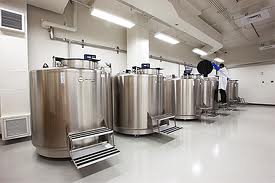Thermal Mapping
As regulators increase their emphasis on GMP requirements for controlled thermal storage requirements, the definitive method to demonstrate that all controlled storage equipment, or storage areas, stay within the specified limits is through a thorough Thermal Mapping exercise.
When faced with the choice of using many contractors or possibly not being able to find anyone to carry out their studies it is not surprising that many companies have tried to bring this “non-core” activity in house. From a compliance standpoint this has two major drawbacks. First, equipment utilization is very low and capital costs for validation equipment are very high. Secondly, in house personnel executing the studies may have a narrow band of experience and little exposure to industry GMPs.
Applied Calibration has the equipment and experienced professionals to help you achieve compliance in this area, and due to the wide range of temperature controlled environments, we can work with your existing quality department’s protocols, help establish new protocols, or authorize you to use our established protocols and reporting documents.
Our mapping services include:
- Freezers, Ultra Low Freezers, and Control Rate Freezers
- Refrigerators
- Incubators
- Cold Rooms
- Autoclaves
- Ovens
- Stability Rooms
- Stability Chambers
- Warehouse Storage Facilities
- and more!
Test Procedures:
- Empty Chamber Thermal Distribution
- Loaded Chamber Thermal Distribution
- Open Door Challenge
- Power Outage Study
Thermal Mapping versus Calibration
Temperature controlled storage areas in GMP facilities are usually continuously monitored by probes. These are routinely calibrated, which might suggest that this all that is needed to meet regulatory requirements.
But Thermal Mapping is very different from routine monitoring using calibrated instruments. One of the key differences is the number of points at which the temperature is measured in the controlled area.
A Thermal Mapping exercise is expected to collect the following information:
- The impact of interventions (door openings / power failures, etc.)
- Identification of hot and cold spots
- Variation of Thermal at a single point
- Thermal variation across the area
- Length of time of any Thermal excursions
To record all this information effectively, each Thermal mapping exercise should be governed by a protocol detailing:
- Selection of testing dates, with consideration to seasonal effects on the Thermal controlled area
- Number of probes to be used and justifications
- Map of probe locations and justifications, including potential hot and cold spots
- Duration of the exercise
- What constitutes “normal use” and therefore levels of stock in the area that are to be used
- Calibration requirements (pre and post)
- Acceptable number of probe failures
- Acceptable limits for Thermal excursions (which may be product dependent).
- Types of data to be generated
- Reporting requirements
- Consideration of acceptance criteria – not just within specified range, but variability across chamber and at each static point.
Our equipment and reporting software is traceable to NIST, 21 CFR 11 compliant, and suitable for FD, cGMP, and GLP applications. Our mapping procedures take into consideration compliance, cost, quality reporting, minimum disruption, and flexibility.
How to meet your compliance obligations at the most effective cost
EQUIPMENT
Applied Calibrations provides all the necessary calibrated equipment on a job by job rental basis, so that you don’t have to buy, maintain and know how to use it.
Our Thermal monitoring equipment includes wireless capabilities. This makes mapping large warehouses and cold rooms much simpler. Mapping performance can be checked in real time, providing a real advantage over the standard multiple battery operated data logger approach. Reporting provides consistency and certainty to data outputs.
PROCESS
A Thermal mapping exercise comprises four broad activities:
- Protocol development
- Trial execution
- Data analysis
- Reporting
Applied Calibration Services can handle all of these services, as well as an ongoing mapping service after the initial protocol development.

